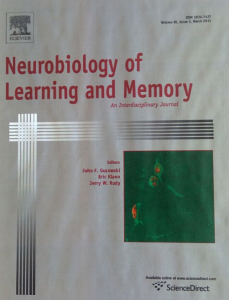Dr. Galea’s NSERC program investigates the hormonal regulation of learning and memory.
The effects of estradiol (E) on learning and memory are complicated as past literature is equivocal. However, her research has addressed a number of inconsistencies in the field. These inconsistencies result from the fact that studies investigating the effects of E on cognition have used:
- different mazes, in which performance relies on the integrity of different brain regions;
- different doses of E;
- different timing of when E is administered in relation to when cognition is tested;
- female rats differing in previous reproductive experience.
We show that all of these factors can influence E’s effects on learning and memory. My NSERC research has systematically investigated the effects of E on learning by:
- varying the dose of E given in a variety of tasks that rely on different brain regions and circuits (the spatial working/reference memory task (Holmes et al., 2002), delayed non-alternation task (Wide et al., 2004), and delayed win-shift (Galea et al., 2001), contextual fear conditioning (Barha et al., 2010), effort-based decision making (Uban et al., 2012);
- examining E’s effects on cognition at different time points after E administration (Sinopoli et al.,2006);
- infusing E directly into prefrontal cortex (PFC) or hippocampus to investigate its effects on working memory (Sinopoli et al.,2006);
- examining the effects of different types of E4;
- examining the effects of different doses of systemic E on the synaptic protein, synaptophysin (Barha et al., 2010);
- examining the effects E to alter immediate early genes in the hippocampus after spatial memory retrieval (McClure et al., 2013).
Collectively, we found that high systemic E impaired performance in hippocampus-dependent (spatial working/reference memory radial arm maze(RAM) (Galea et al., 2001; Holmes et al., 2002) and contextual fear conditioning (Barha et al., 2010), caudate-dependent (cued win-stay) (Galea et al., 2001), and amygdala-dependent (conditioned place preference (Galea et al., 2001) tasks. This shows that E affects cognition in a number of brain areas. However, lower E facilitated performance on hippocampus-dependent and PFC-dependent tasks (Barha et al., 2010; Uban et al., 2012, Wide et al., 2004). Together we found that higher E impairs both working and reference memory, while lower E facilitates working, but not reference, memory (Galea et al., 2001; Holmes et al., 2002; Wide et al., 2004). This suggests a dissociation of E’s effects on working and reference memory processes. Intriguingly we have also found that E infused into either the dorsal hippocampus or PFC facilitated working memory in the delayed win-shift but at different doses (Sinopoli et al.,2006). Therefore, the simple phrase “estrogen enhances learning” is not valid, and our findings suggest a better description would be “estrogen modulates learning depending on dose and brain regions recruited”.
In addition, we found that high ovarian steroids are associated with spatial strategy use (Rummel et al.,2013). Further, our work suggests both genomic and non-genomic mechanisms are at play for E to affect mesolimbic-dependent decision making and hippocampus-dependent memory (Barha et al., 2010; Sinopoli et al., 2006; Uban et al., 2012; Wide et al., 2004). To examine neural correlates of E’s effects on learning we found that E upregulated the synaptic protein, synaptophysin in the CA3, but not CA1 or dentate gyrus (DG), region of the hippocampus (Barha et al., 2010) and expression of the immediate early gene (IEG) product, zif268, in the ventral, but not dorsal, DG (Rummel et al., 2013) with water maze training. Furthermore, pilot data indicate that females and males show different expression patterns of IEG in the hippocampus and dorsomedial (DM) striatum (zif268/cfos) dependent on strategy use (Yagi et al., 2015).
Our research has also tried to link spatial learning to neurogenesis in both males and females. We have found that although males show an upregulation in neurogenesis in the hippocampus in response to spatial performance (Morris Water Maze or Pattern Separation), females do not (Chow et al.,2013; Yagi et al., 2015). This upregulation in neurogenesis with spatial learning in males is dependent on the type of task, the timing of the task relative to the maturation of new neurons, the strain of rat, and task difficulty (Epp et al., 2007, 2010, 2011a, 2011b; reviewed in Epp et al., 2013). 